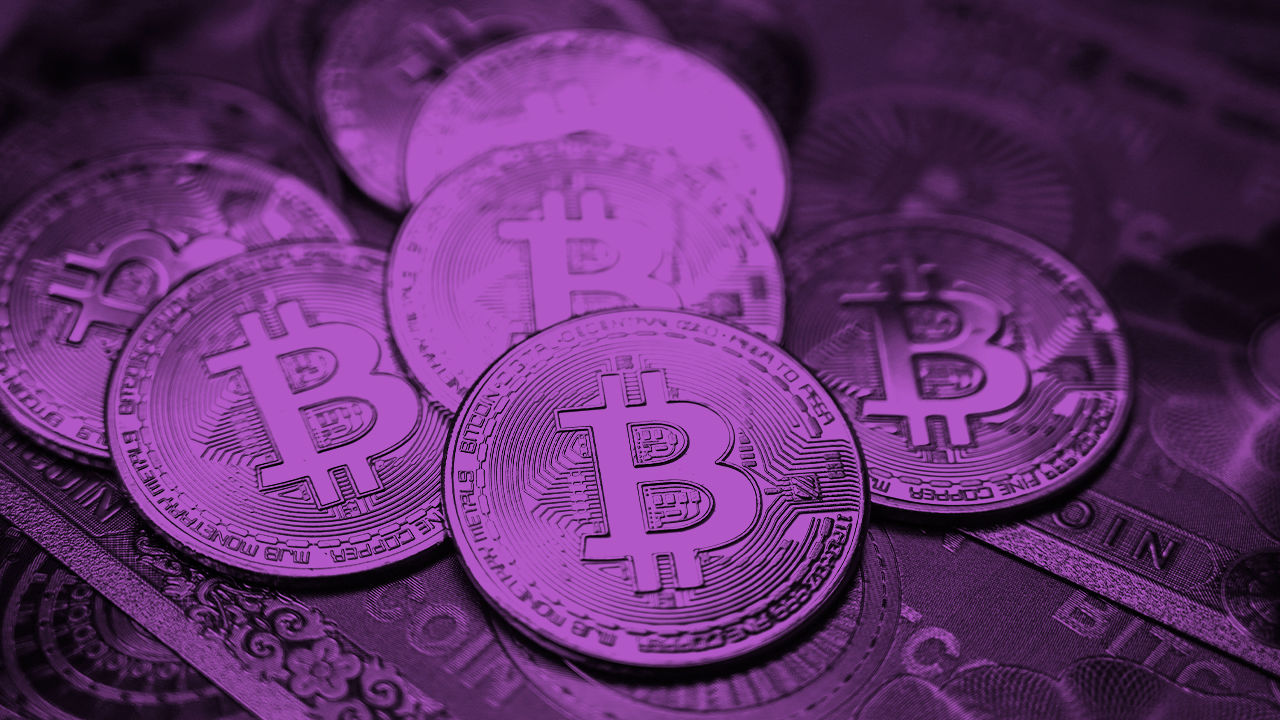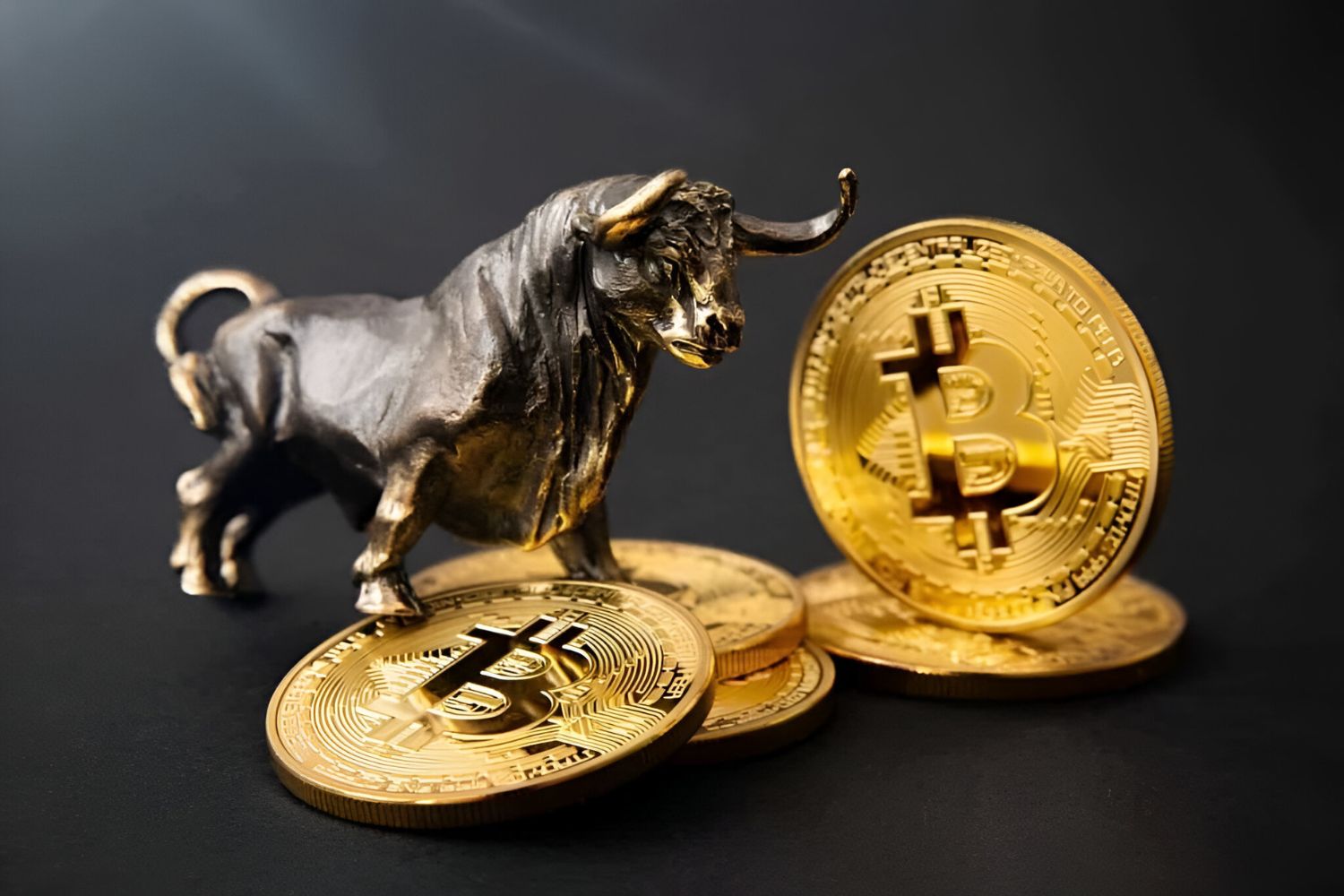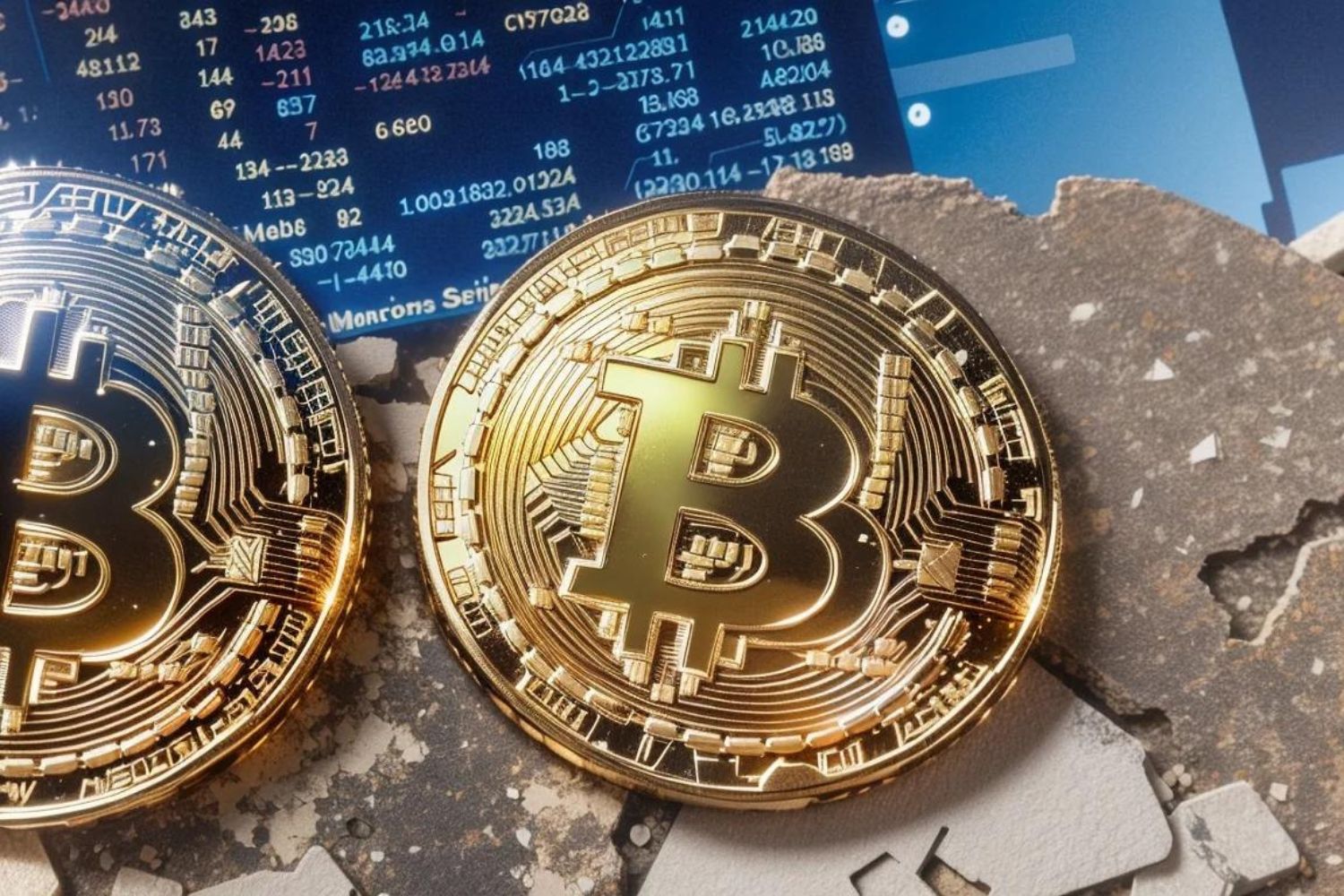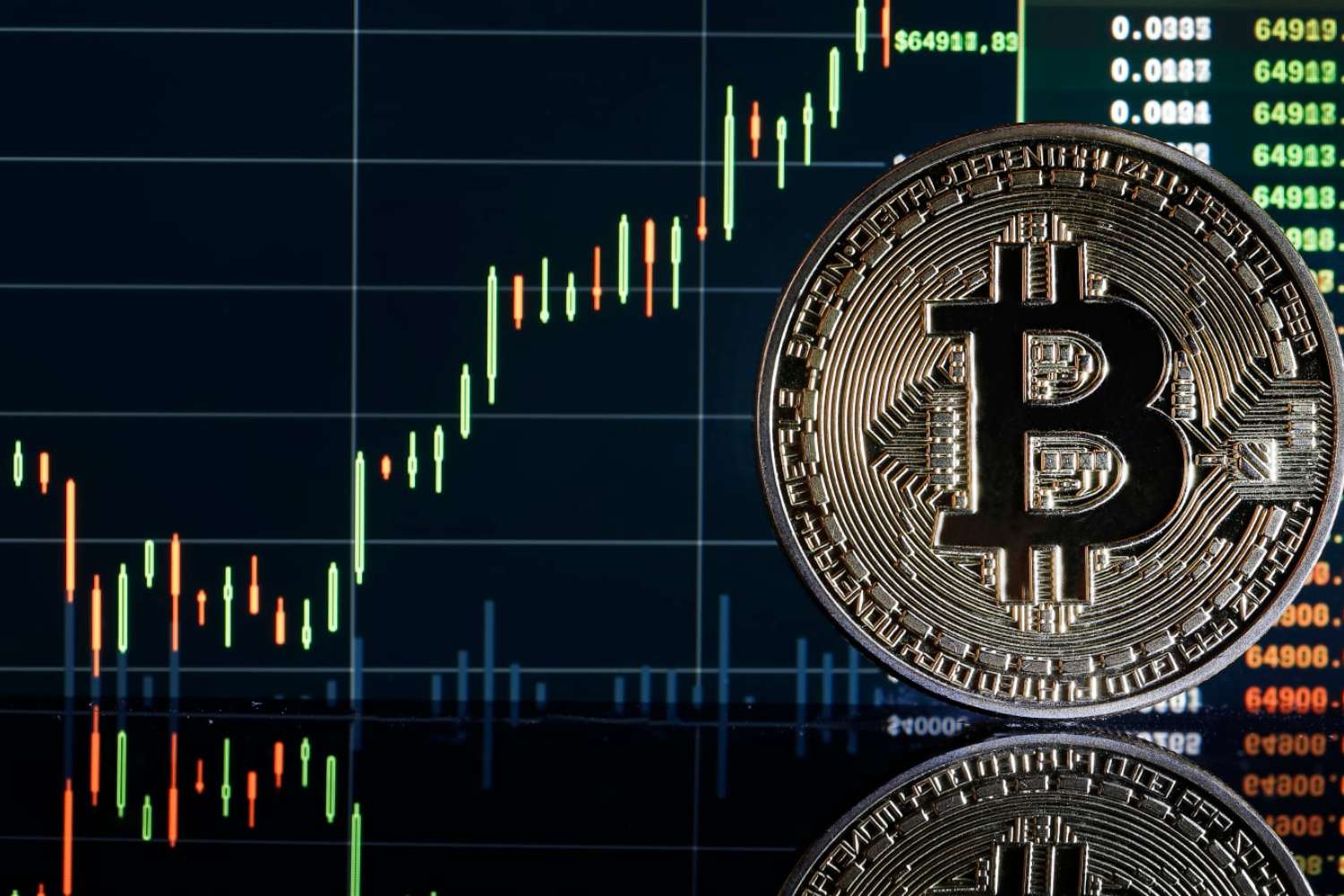Introduction
Over the past decade, the world has witnessed the meteoric rise of cryptocurrency, particularly Bitcoin, from a niche concept to a global phenomenon. Initially viewed with skepticism and mistrust, cryptocurrency has gradually gained recognition and credibility, particularly among mainstream banks and large companies. The transformation of perception towards cryptocurrency can be attributed to several key events and factors that have shaped its appeal and acceptance.
Bitcoin, the first decentralised digital currency, introduced in 2009, laid the foundation for the cryptocurrency revolution. It offered a borderless and secure method of transferring value, without the need for intermediaries like banks or governments. Initially, many viewed Bitcoin as a fringe technology associated with illicit activities. However, as the years went by, its potential became evident, and acceptance gradually grew.
A significant turning point for cryptocurrency was the recognition and regulation by various regulatory bodies around the world. Governments and financial institutions began to see the value in properly monitoring and regulating this emerging form of currency. They realized that, by doing so, they could protect consumers, prevent money laundering, and foster innovation in the financial sector.
The Rise of Bitcoin
A major catalyst for the growing appeal of cryptocurrency to mainstream banks and large companies has been the unprecedented rise of Bitcoin. Bitcoin’s value surged from a few cents in its early days to reaching an all-time high of over $60,000 per coin in 2021. This exponential increase in value caught the attention of not only individual investors but also institutional players.
The rise of Bitcoin can be attributed to several factors. Firstly, its decentralization and limited supply have made it an attractive alternative to traditional fiat currencies. With a finite supply capped at 21 million coins, Bitcoin is perceived as a store of value, similar to gold. This led to a surge in demand from individuals and institutions seeking a hedge against inflation and economic uncertainty.
Furthermore, the increasing adoption and acceptance of Bitcoin by businesses and retailers have contributed to its mainstream appeal. Companies such as Microsoft, Expedia, and Shopify began accepting Bitcoin as a form of payment, giving it a practical use case beyond speculative investment. This trend has continued to gain momentum with more companies recognizing the benefits of adopting cryptocurrencies.
In addition, the development of secure and user-friendly cryptocurrency exchanges has made it easier for individuals and institutions to buy, sell, and store Bitcoin. This increased accessibility and convenience have removed some of the barriers that previously hindered wider adoption.
Another significant factor in the rise of Bitcoin’s appeal has been the growing interest from institutional investors. Traditional financial institutions, such as hedge funds and asset management firms, have recognized Bitcoin as a legitimate asset class with the potential for substantial returns. This institutional interest has brought increased liquidity and stability to the cryptocurrency market, attracting more mainstream players.
The rise of Bitcoin as a mainstream investment asset has also been influenced by the entry of major companies into the cryptocurrency space. Square, a prominent payment company, added Bitcoin to its balance sheet, signaling its confidence in the digital currency. Additionally, business intelligence firm MicroStrategy made headlines with its significant Bitcoin purchases, with CEO Michael Saylor expressing his belief in Bitcoin as a long-term store of value.
All these factors combined have made Bitcoin an appealing asset for mainstream banks and large companies. Its potential for growth and diversification, along with the increasing acceptance and support from regulatory bodies and financial institutions, have paved the way for the wider adoption of cryptocurrencies in the mainstream financial ecosystem.
Recognition by Regulatory Bodies
One of the pivotal events that propelled cryptocurrency, particularly Bitcoin, into the mainstream was the recognition and regulation by regulatory bodies around the world. In the early days of cryptocurrency, it operated in a regulatory gray area, with many governments unsure of how to classify and approach this new form of currency. However, as the market matured and its potential became evident, regulatory bodies began to take notice and established frameworks to govern its use.
A key milestone in the recognition of cryptocurrency was the issuance of guidelines by the Financial Action Task Force (FATF), an intergovernmental organization focused on combating money laundering and terrorism financing. In 2019, the FATF released the “Travel Rule” guidance that required virtual asset service providers (VASPs) to collect and share customer information during transactions. This move aimed to bring cryptocurrency transactions in line with traditional financial regulations and enhance transparency.
Furthermore, major economies, including the United States, the European Union, Japan, and South Korea, have implemented regulatory measures to oversee cryptocurrency exchanges and activities. These regulations are intended to protect consumers, prevent fraud and money laundering, and provide legal clarity for businesses operating in the cryptocurrency space.
The recognition and regulation by regulatory bodies have provided additional credibility to cryptocurrency, encouraging mainstream banks and large companies to explore its potential. With clear guidelines and oversight in place, businesses are now more willing to engage with cryptocurrencies, knowing that they can operate within a regulated framework.
Moreover, the regulatory push has helped to reduce the stigma associated with cryptocurrency, as it is now perceived as a legitimate asset class backed by established legal frameworks. This has made it easier for traditional financial institutions, such as banks, to consider integrating cryptocurrency services into their offerings.
Additionally, regulatory recognition has also paved the way for institutional investors to enter the cryptocurrency market. Many institutional players were previously hesitant due to concerns about the lack of regulation and oversight. However, with clear guidelines in place, institutional investors now have the confidence to allocate funds to cryptocurrencies, which in turn further legitimizes the asset class.
Overall, the recognition and regulation by regulatory bodies have played a crucial role in the mainstream acceptance of cryptocurrencies. By providing legal clarity, consumer protection, and oversight, regulatory frameworks have paved the way for mainstream banks and large companies to engage with cryptocurrencies, leading to increased adoption and integration of digital assets into the traditional financial system.
The Bitcoin Halving
Another significant event that has made cryptocurrency, specifically Bitcoin, more appealing to mainstream banks and large companies is the Bitcoin halving. The Bitcoin halving is a pre-programmed event that occurs approximately every four years and involves a reduction in the reward given to Bitcoin miners for validating transactions.
When Bitcoin was created, it was designed to have a limited supply of 21 million coins. To ensure scarcity and prevent inflation, the system implemented a mechanism that reduces the rate of new Bitcoin issuance by half every 210,000 blocks, or roughly every four years. This event is known as the Bitcoin halving.
The Bitcoin halving serves as a significant milestone in the Bitcoin ecosystem. By reducing the rate of new supply, it creates a scarcity of newly minted coins, increasing the demand-supply dynamics and potentially driving up the price of Bitcoin.
This unique feature of Bitcoin has attracted the attention of both individual and institutional investors. The anticipation surrounding the Bitcoin halving event often leads to increased media coverage and market speculation, generating a sense of excitement and potential price appreciation.
Large companies and institutional investors are particularly interested in the Bitcoin halving for several reasons. Firstly, it underscores the scarcity of Bitcoin as an asset. With each halving, the potential growth in value becomes more evident, and the limited supply narrative gains credibility. This scarcity aspect taps into the desire for a store of value and potentially offers an alternative investment from traditional assets.
Additionally, the Bitcoin halving has implications for mining operations. With the reduction in block reward, miners need to become more efficient and innovative to maintain profitability. This has led to the development of more advanced mining hardware, increased mining rig optimization, and the concentration of mining power in regions with favorable electricity costs. By embracing advancements in mining technology, mainstream banks and large companies can potentially tap into the burgeoning Bitcoin mining industry.
Furthermore, the Bitcoin halving has an impact on investor psychology. The reduction in supply coupled with increased demand creates a bull market narrative, which can attract more institutional investors seeking exposure to Bitcoin. This influx of institutional capital contributes to the maturation and legitimacy of the cryptocurrency market.
Overall, the Bitcoin halving event has garnered attention from mainstream banks and large companies due to its potential impact on the scarcity and value of Bitcoin. By signaling the reduction in supply, the halving event has generated excitement and speculation, attracting institutional investors and paving the way for greater acceptance and adoption of cryptocurrencies in traditional financial institutions.
Institutional Investors and Bitcoin
An essential factor in making cryptocurrency, particularly Bitcoin, more appealing to mainstream banks and large companies is the increasing interest and participation of institutional investors in the cryptocurrency market. Institutional investors, such as hedge funds, asset management firms, and even insurance companies, have been drawn to Bitcoin due to its potential for significant returns and diversification benefits.
Institutional investors traditionally focused on more traditional assets, such as stocks, bonds, and commodities. However, the unique characteristics of Bitcoin, such as its limited supply and decentralized nature, have caught the attention of these investors. They recognize Bitcoin’s potential as a store of value and a hedge against inflation and economic uncertainty.
One of the driving factors behind institutional investors’ interest in Bitcoin is the potential for substantial returns. Bitcoin’s price volatility, while presenting risks, also provides the opportunity for significant gains. Institutional investors are adept at managing risk and allocating capital to assets that offer a favorable risk-reward profile. The high returns that Bitcoin has delivered in recent years have captured the attention of these investors.
Moreover, institutional investors are attracted to Bitcoin as a means of diversification. Traditional investment portfolios often consist of a mix of stocks, bonds, and other asset classes. By including Bitcoin in their portfolios, institutional investors can achieve greater diversification, as cryptocurrencies have shown a historically low correlation with traditional assets. This diversification potential adds value to investment strategies and mitigates overall portfolio risk.
Institutional investors’ involvement in the cryptocurrency market has also brought increased liquidity and stability. The substantial capital and trading expertise that these investors bring contribute to a more liquid and efficient market for cryptocurrencies. This encourages more mainstream banks and large companies to consider including cryptocurrencies in their investment portfolios, as they can have confidence in the liquidity and market depth of these assets.
Additionally, the entry of institutional investors brings a level of credibility and legitimacy to the cryptocurrency market. Traditional financial institutions and investors often rely on trusted intermediaries and regulated markets. With institutional investors showing interest in Bitcoin, it signifies a growing acceptance and recognition of cryptocurrencies as a legitimate asset class. This recognition further encourages mainstream banks and large companies to explore opportunities within the cryptocurrency space.
Overall, the participation of institutional investors in the cryptocurrency market, with a focus on Bitcoin, has played a vital role in making cryptocurrencies more appealing to mainstream banks and large companies. Their interest in the potential returns, diversification benefits, and the credibility they bring to the market have paved the way for wider adoption and integration of digital assets into the traditional financial system.
PayPal’s Integration of Cryptocurrencies
The integration of cryptocurrencies by PayPal, a leading global online payment system, has been a significant development that has made digital currencies more appealing to mainstream banks and large companies. In October 2020, PayPal announced its entry into the cryptocurrency market by enabling its users to buy, sell, and hold certain cryptocurrencies, including Bitcoin, Ethereum, Bitcoin Cash, and Litecoin.
This move by PayPal marked a major milestone in the mainstream adoption of cryptocurrencies. With over 377 million active users worldwide, PayPal’s integration of cryptocurrencies introduced millions of people to the world of digital assets, making them more accessible and convenient to a vast user base.
One of the key benefits that PayPal’s integration brought to the table was the ease of use. Previously, buying and selling cryptocurrencies often involved navigating complex exchanges and wallets. With PayPal’s integration, users could transact in cryptocurrencies directly within their existing PayPal accounts, leveraging the familiarity and user-friendly interface of the platform. This accessibility is particularly attractive to mainstream users who may not be familiar with the intricate technicalities of cryptocurrencies.
The integration of cryptocurrencies by PayPal also reinforced the trust and security aspects associated with digital assets. As a widely recognized and trusted payment service provider, PayPal brought a sense of legitimacy and credibility to the cryptocurrency market. Users can feel confident in conducting cryptocurrency transactions through PayPal, knowing that their funds and personal information are protected by the platform’s robust security measures.
Furthermore, PayPal’s embrace of cryptocurrencies signals a shift in the perception of digital assets from speculative investments to viable payment methods. By allowing users to spend their cryptocurrencies at millions of merchants in the PayPal network, the integration promotes the practical use of cryptocurrencies in everyday transactions. This development has a significant impact on mainstream acceptance and adoption as more businesses and retailers recognize the benefits of accepting cryptocurrencies as payment.
Moreover, PayPal’s foray into the cryptocurrency market has prompted other major financial institutions to take note and consider their own integration. It has acted as a catalyst for further acceptance and exploration of cryptocurrencies within traditional banking and financial systems. As more institutions follow in PayPal’s footsteps, cryptocurrencies gain greater legitimacy and become more intertwined with the mainstream financial ecosystem.
Overall, PayPal’s integration of cryptocurrencies has had a profound effect on the appeal and acceptance of digital assets by mainstream banks and large companies. By bringing accessibility, trust, and practical use cases to the forefront, PayPal has paved the way for wider adoption and integration of cryptocurrencies, acting as a driving force for the increasing acceptance of these digital assets in the traditional financial world.
Visa and Mastercard’s Support
Another significant development that has made cryptocurrency more appealing to mainstream banks and large companies is the support and integration of digital currencies by payment giants Visa and Mastercard. These two global payment networks play a crucial role in facilitating transactions worldwide, and their acceptance of cryptocurrencies has further validated the legitimacy and potential of digital assets.
Visa, recognized as one of the largest payment networks globally, announced its support for cryptocurrencies in early 2021. The company outlined its plans to enable the seamless conversion of cryptocurrencies into fiat currencies for transactions on its network. This move effectively opens the door for millions of merchants to accept and process payments in cryptocurrencies, bridging the gap between digital assets and traditional payment methods.
In a similar vein, Mastercard has also embraced cryptocurrencies, aiming to provide a variety of payment options for its customers. Mastercard’s integration of cryptocurrencies enables users to securely store and transact with digital assets through their Mastercard accounts. This integration allows merchants to accept cryptocurrency payments, expanding the payment options available to customers and enhancing the flexibility of transactions.
The support of Visa and Mastercard is critical for the mainstream adoption of cryptocurrencies. Their established presence and global reach provide an infrastructure that can facilitate the widespread acceptance and usage of digital assets. Businesses and merchants that work with these payment networks can now include cryptocurrencies as a viable payment option alongside traditional forms of payment. This integration increases the practicality and convenience of using cryptocurrencies in day-to-day transactions.
Furthermore, Visa and Mastercard’s involvement in the cryptocurrency market adds a layer of confidence and trust for both consumers and businesses. These payment networks have well-established security measures, fraud prevention protocols, and dispute resolution systems. By incorporating cryptocurrencies into their existing frameworks, they provide an added level of protection and reliability for cryptocurrency transactions, mitigating concerns about security and fraudulent activity.
Additionally, the support of Visa and Mastercard signals the growing acceptance and recognition of cryptocurrencies by traditional financial institutions. Their decision to embrace this emerging asset class further emphasizes the potential of cryptocurrencies and their integration into the mainstream financial ecosystem. As more financial institutions witness the adoption by Visa and Mastercard, they are more likely to explore opportunities within the cryptocurrency space themselves.
Overall, the support and integration of cryptocurrencies by Visa and Mastercard have significantly bolstered the appeal and acceptance of digital assets by mainstream banks and large companies. Their involvement creates a bridge between cryptocurrencies and existing payment systems, making digital currencies more practical, secure, and accessible for both consumers and businesses. The recognition and integration by these payment giants contribute to the wider acceptance and adoption of cryptocurrencies in the traditional financial world.
Tesla’s Investment in Bitcoin
The decision by Tesla, the electric vehicle pioneer led by Elon Musk, to invest in Bitcoin has had a profound impact on the appeal of cryptocurrencies to mainstream banks and large companies. In February 2021, Tesla made headlines when it revealed that it had purchased $1.5 billion worth of Bitcoin and planned to accept the cryptocurrency as payment for its electric vehicles.
Tesla’s investment in Bitcoin marked a significant milestone in the acceptance and recognition of cryptocurrencies as a legitimate asset class. The endorsement by a high-profile company like Tesla, known for its innovative approach and visionary leadership, generated major excitement and interest among investors and industry players.
One of the key drivers behind Tesla’s decision to invest in Bitcoin was its belief in the long-term value and potential growth of the cryptocurrency. Tesla’s investment strategy focused on diversifying its cash holdings and seeking alternatives to traditional assets. By allocating a portion of its treasury to Bitcoin, Tesla signaled its confidence in the cryptocurrency’s potential as a store of value and a hedge against inflation.
The move by Tesla also highlighted the growing sentiment among businesses that cryptocurrencies are becoming more widely accepted as a means of payment. By announcing its intent to accept Bitcoin as payment for its vehicles, Tesla showcased the practicality and viability of cryptocurrencies in everyday transactions. This development has incentivized other businesses, particularly in the retail industry, to explore accepting cryptocurrencies as a payment option, further integrating digital assets into the traditional financial system.
Furthermore, Tesla’s involvement in the cryptocurrency market has fueled interest from other large companies and institutional investors. The endorsement by Tesla, a company with a market capitalization in the hundreds of billions of dollars, has brought newfound legitimacy and credibility to the cryptocurrency market. This has prompted other companies to consider exploring cryptocurrency investment and adoption, further solidifying the mainstream appeal of digital assets.
Moreover, Tesla’s investment in Bitcoin has also contributed to the price appreciation and overall market sentiment towards cryptocurrencies. The announcement of Tesla’s Bitcoin purchase sent shockwaves through the market, resulting in a surge in demand and price volatility. This increased attention and speculation surrounding cryptocurrencies have attracted more investors, contributing to the continued growth and momentum of the digital asset market.
Overall, Tesla’s investment in Bitcoin has played a significant role in making cryptocurrencies more appealing to mainstream banks and large companies. Its endorsement of Bitcoin as a long-term investment and its acceptance of the cryptocurrency as a form of payment have catalyzed widespread interest and acceptance. Tesla’s involvement has provided validation, increased market confidence, and accelerated the integration of cryptocurrencies into the traditional financial ecosystem.
Increased Acceptance of Cryptocurrencies by Retailers
One of the significant developments that have made cryptocurrencies more appealing to mainstream banks and large companies is the increased acceptance of digital currencies by retailers. In recent years, an expanding number of retailers, both online and offline, have started accepting cryptocurrencies as a form of payment, acknowledging the growing demand for alternative payment options and the potential benefits that digital assets offer.
The acceptance of cryptocurrencies by retailers has several advantages. Firstly, it expands the usability and practicality of digital currencies, allowing users to utilize their cryptocurrency holdings to purchase real-world goods and services. This acceptance adds value to cryptocurrencies as a medium of exchange, going beyond speculative investments and providing real-world functionality.
Furthermore, the acceptance of cryptocurrencies by retailers enhances the adoption of digital assets by exposing them to a wider customer base. As more mainstream retailers offer cryptocurrency payment options, it introduces cryptocurrencies to customers who may not have previously been aware of or involved in the digital currency ecosystem. This exposure helps to normalize and familiarize people with cryptocurrencies, making them more comfortable using these digital assets in their daily lives.
Retailers also benefit from accepting cryptocurrencies. One of the key advantages for retailers is the lower transaction fees associated with digital currency payments compared to traditional payment methods. By accepting cryptocurrencies, retailers can reduce transaction costs, especially for international transactions, where traditional payment methods may incur higher fees and longer processing times. This cost-saving potential makes cryptocurrencies an attractive option for retailers seeking to streamline their payment processes and cut down on operational expenses.
Moreover, by accepting cryptocurrencies, retailers can tap into a global customer base of cryptocurrency enthusiasts. Cryptocurrencies are borderless, enabling customers from anywhere in the world to make purchases without concerns about currency exchange rates or international transaction fees. This expands the reach of retailers, allowing them to connect with a broader audience and potentially drive sales growth.
The acceptance of cryptocurrencies by prominent retailers has also contributed to the normalization and acceptance of digital assets by the general public. As more recognizable and trusted retailers embrace cryptocurrencies, it boosts consumer confidence and credibility in using digital currencies for transactions. This positive perception helps to fuel further adoption and integration of cryptocurrencies into the mainstream financial landscape.
Overall, the increased acceptance of cryptocurrencies by retailers has played a significant role in making digital assets more appealing to mainstream banks and large companies. By expanding usability, reducing transaction costs, and reaching a wider customer base, retailers are driving the integration of cryptocurrencies into daily transactions. This acceptance contributes to the overall growth and acceptance of digital assets, making cryptocurrencies a more viable and accepted payment option in the traditional retail industry.
Stablecoin Solutions for Volatility
One of the critical factors that have made cryptocurrencies more appealing to mainstream banks and large companies is the development and rise of stablecoins as solutions for the inherent volatility of digital currencies. Stablecoins are cryptocurrencies that are designed to maintain a stable value by pegging them to traditional assets, such as fiat currencies or commodities.
The volatility of cryptocurrencies, exemplified by the price fluctuation of Bitcoin and other major digital assets, has been a significant concern for businesses and individuals considering their integration into everyday transactions. The value of cryptocurrencies can experience significant swings, making them unpredictable and potentially risky as a medium of exchange. However, stablecoins aim to address this issue by providing a stable store of value that can be used for transactions without the price fluctuations associated with other cryptocurrencies.
The concept of stablecoins is not entirely new, with efforts to create stable digital currencies dating back several years. However, recent advancements and growing interest have resulted in the development of more robust and widely adopted stablecoin solutions.
One of the most well-known stablecoins is Tether (USDT), which has its value directly linked to the US dollar. Other stablecoins, such as USD Coin (USDC), Dai (DAI), and TrueUSD (TUSD), also maintain a stable value by pegging to the US dollar or using decentralized mechanisms to stabilize their price.
The appeal of stablecoins for mainstream banks and large companies lies in their ability to provide the benefits of cryptocurrencies, such as transparency, security, and efficiency, while mitigating the inherent volatility risks. Stablecoins offer a reliable and predictable value that resembles traditional fiat currencies. This stability makes them more suitable for everyday transactions, enabling businesses to accept them as payment without the concerns associated with rapidly changing cryptocurrency prices.
Furthermore, stablecoins have gained popularity for their potential to facilitate cross-border transactions. The traditional system for international payments can be costly and time-consuming, with multiple intermediaries involved. Stablecoins, on the other hand, offer a borderless form of payment that can be executed more quickly and with reduced transaction fees. This appeal enhances their integration into global business environments and makes them an attractive option for cross-border financial operations.
Stablecoins also provide a bridge between the traditional financial system and the world of cryptocurrencies. Their stable value makes them easier to understand and adopt for businesses and individuals who may be hesitant to engage directly with more volatile digital assets. This bridging effect helps to promote mainstream acceptance and paves the way for larger companies and financial institutions to incorporate stablecoins into their operations.
Overall, stablecoins offer a practical solution for the volatility associated with cryptocurrencies, making them more appealing to mainstream banks and large companies. By providing a stable store of value and facilitating efficient cross-border transactions, stablecoins bridge the gap between traditional financial systems and the world of digital assets, enabling wider adoption and integration of cryptocurrencies in everyday business operations.
Conclusion
The appeal of cryptocurrencies to mainstream banks and large companies has grown significantly in recent years, thanks to several key events and factors. The rise of Bitcoin as a decentralized digital currency and its recognition by regulatory bodies have played a crucial role in shaping the perception and acceptance of cryptocurrencies. The integration of digital assets by payment giants like PayPal, Visa, and Mastercard has made cryptocurrencies more accessible and practical for everyday transactions. The involvement of institutional investors, such as hedge funds and asset management firms, has further increased the appeal of cryptocurrencies as a legitimate asset class. Additionally, the investments by companies like Tesla and the increased acceptance by retailers have contributed to the normalization and wider adoption of cryptocurrencies in the traditional financial system.
Furthermore, the development and rise of stablecoins have addressed the volatility concerns associated with cryptocurrencies, providing stability and predictability for businesses and individuals engaging in everyday transactions. Stablecoins offer a bridge between traditional financial systems and the world of digital assets, facilitating cross-border transactions and enhancing mainstream acceptance.
In conclusion, the increasing appeal of cryptocurrencies to mainstream banks and large companies can be attributed to the combination of these factors. The recognition, regulation, and integration by regulatory bodies and established financial institutions have brought credibility and legitimacy to the cryptocurrency market. The endorsement and investment by well-known companies have paved the way for wider acceptance and adoption. The development of stablecoin solutions has mitigated the volatility risks, making cryptocurrencies more practical and accessible for day-to-day transactions.
As the crypto industry continues to evolve and mature, we can expect further advancements and integration, making cryptocurrencies an integral part of the mainstream financial system. The appeal and acceptance of cryptocurrencies will continue to increase as more businesses, financial institutions, and individuals recognize the benefits and embrace the potential of digital assets in the digital economy of the future.

























